The Business Case for Sustainable Activewear: Meeting Consumer Demand & Enhancing Brand Value?
Environmental concerns are increasingly driving consumer purchasing decisions. Brands that ignore sustainability risk losing market share to more eco-conscious competitors, particularly in the activewear category where connection to nature and wellness is paramount.
Sustainable activewear represents both an environmental imperative and a business opportunity. 67% of consumers consider sustainability when purchasing activewear, and 73% are willing to pay more for sustainable products. Brands that incorporate recycled materials, organic cotton, or biodegradable fabrics can command premium pricing while attracting conscious consumers.
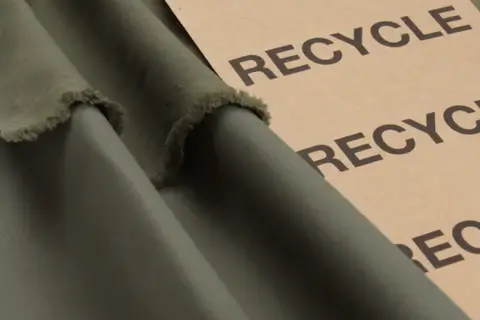
At HAVING, we've embraced sustainability in our activewear manufacturing, offering recycled polyester options, organic cotton blends, and eco-friendly packaging solutions. Our experience has shown that sustainability isn't just good for the planet—it's good for business. Let me share what we've learned about the compelling business case for sustainable activewear.
Why Is Sustainability Becoming a Market Imperative?
Consumer preferences are shifting dramatically toward sustainable options. Brands that fail to recognize this trend risk becoming obsolete as eco-conscious alternatives capture market share.
67% of global consumers say they consider sustainability when purchasing activewear, and this percentage rises to 73% among millennials. In the fitness and wellness category specifically, 78% of consumers express concern about the environmental impact of their purchases, making sustainability a key differentiator in purchase decisions.
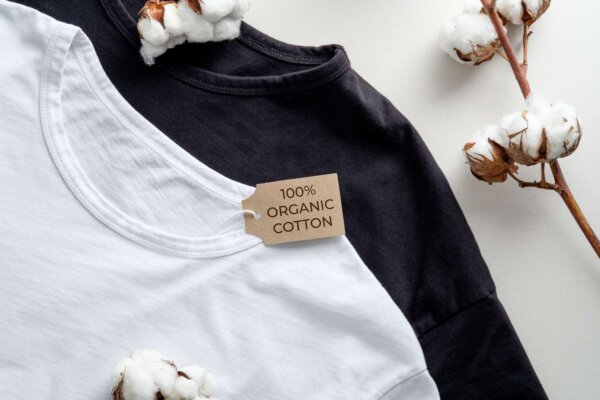
When we first started manufacturing activewear at HAVING, sustainability was considered a niche selling point. Today, it's become a mainstream expectation, particularly in this category. Here's why sustainability has become a market imperative:
Shifting Consumer Values
Recent market research reveals dramatic shifts in consumer priorities:
| Consumer Trend | Percentage | Business Implication |
|---|---|---|
| Willing to pay more for sustainable products | 73% | Opportunity for premium pricing |
| Consider environmental impact important in purchasing decisions | 67% | Sustainability as competitive advantage |
| Actively seek brands with strong environmental values | 58% | Brand loyalty opportunity |
| Have switched brands based on environmental concerns | 35% | Risk of customer loss if not addressing sustainability |
Generational Differences
Sustainability preferences vary significantly by generation:
- Gen Z (18-24): 83% believe companies should address environmental issues
- Millennials (25-40): 73% say environmental concerns impact their purchasing decisions
- Gen X (41-56): 60% willing to pay more for sustainable products
- Baby Boomers (57-75): 52% consider sustainability in purchasing decisions
With younger generations representing the primary market for activewear, their stronger sustainability preferences are particularly relevant for this category.
Activewear-Specific Concerns
The activewear industry faces particular scrutiny:
- Synthetic fabrics like polyester and nylon are petroleum-based and non-biodegradable
- Production processes can be water and chemical-intensive
- Fast fashion approaches have led to excessive waste
- Consumers increasingly see a disconnect between wellness-focused products and environmentally harmful practices
These concerns have created a significant market opportunity for brands that can authentically address sustainability while maintaining performance and style.
For a comprehensive overview of the activewear market and consumer trends, visit our detailed analysis: Understanding the Activewear & Yoga Wear Market: Trends, Demographics & Opportunities for B2B Buyers.
What Are the Financial Benefits of Sustainable Activewear?
Many businesses hesitate to invest in sustainability due to concerns about costs and returns. Understanding the complete business case helps justify these investments.
The return on investment for sustainable activewear comes through multiple channels: premium pricing potential (15-30% higher price points), increased customer loyalty (27% higher retention rates for sustainable brands), enhanced brand reputation, retail placement advantages, and reduced risk of future regulatory compliance issues.
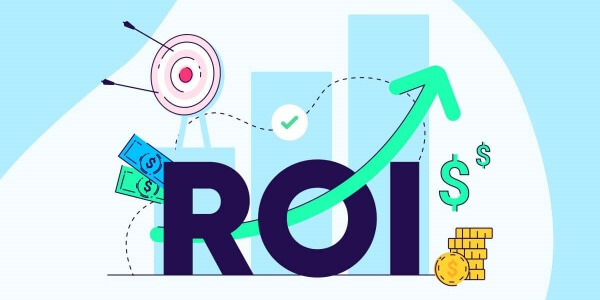
At HAVING, we've seen firsthand how sustainability investments deliver tangible business returns. Here's the comprehensive business case:
Financial Benefits
Premium Pricing Potential
Market research shows consumers will pay more for sustainable products:
- 73% will pay at least 10% more for sustainable options
- 32% will pay 25% or more for products with strong environmental credentials
- In activewear specifically, sustainable options command 15-30% price premiums
Increased Sales Volume
Sustainability drives purchase decisions:
- 67% of consumers are more likely to purchase products clearly marked as environmentally friendly
- Sustainable activewear brands typically see 15-25% higher conversion rates
- Retailers report 10-20% higher sell-through rates for sustainable activewear products
Enhanced Customer Loyalty
Sustainability builds stronger customer relationships:
- Brands with strong sustainability credentials enjoy 27% higher customer retention
- 41% of consumers are more likely to recommend sustainable brands to friends
- Lifetime customer value increases by approximately 22% for sustainable products
Brand Value Enhancement
Reputation Benefits
Sustainability strengthens overall brand perception:
- 64% of consumers (and 72% of millennials) have a more positive image of brands with proven sustainability commitments
- Media coverage is 2.5x more likely for brands with authentic sustainability stories
- Social media engagement rates are 35% higher for sustainable product content
Competitive Differentiation
In the increasingly crowded activewear market:
- Sustainability creates meaningful differentiation beyond basic functionality
- 52% of consumers consider environmental impact when choosing between similar activewear products
- Sustainability credentials help avoid commodity pricing pressures
Retail Placement Advantages
Major retailers increasingly prioritize sustainable products:
- Many retailers have established sustainability requirements for new vendors
- Premium retail placement is often allocated to sustainable options
- Some retailers offer marketing support specifically for sustainable products
Risk Mitigation
Regulatory Compliance
Proactive sustainability adoption reduces future risks:
- Environmental regulations are becoming more stringent globally
- Early adoption prevents costly forced changes later
- Some markets are implementing extended producer responsibility laws
Consumer Backlash Protection
Sustainability protects against negative publicity:
- Brands without environmental commitments face increasing scrutiny
- Social media amplifies environmental concerns rapidly
- Greenwashing accusations can cause significant brand damage
For detailed information on pricing strategies and profit margins for sustainable activewear, explore our analysis: Maximizing Your ROI: Activewear & Yoga Wear Wholesale Pricing, Retail Margins & Profitability Analysis.
What Sustainable Material Options Are Available for Activewear?
Many businesses are unaware of the range of sustainable materials now available for activewear. Understanding these options is essential for making informed product development decisions.
Sustainable activewear materials include recycled polyester (made from post-consumer plastic bottles), recycled nylon (often from fishing nets and carpet waste), organic cotton (grown without harmful pesticides), and innovative natural performance fabrics like eucalyptus-based lyocell. Each offers different performance characteristics and sustainability benefits.
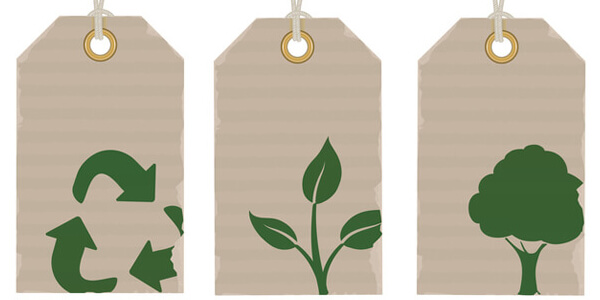
At HAVING, we've developed activewear using various sustainable materials. Here's our assessment of the key options:
Recycled Synthetic Materials
Recycled Polyester
Environmental Benefits:
- Diverts plastic bottles from landfills and oceans
- Requires 30-50% less energy than virgin polyester
- Reduces dependence on petroleum
- Produces 54% less carbon emissions than virgin polyester
Performance Characteristics:
- Nearly identical performance to virgin polyester
- Excellent moisture-wicking
- Good durability and colorfastness
- Quick-drying properties
Business Considerations:
- 10-15% cost premium over virgin polyester
- Strong marketing story (bottles-to-fabric)
- Widely available in various qualities
- Can be certified through GRS (Global Recycled Standard)
Recycled Nylon
Environmental Benefits:
- Often made from fishing nets, carpet waste, or pre-consumer waste
- Reduces waste in oceans and landfills
- Requires 80% less water than virgin nylon
- Produces 90% less CO₂ than virgin nylon
Performance Characteristics:
- Comparable to virgin nylon in most properties
- Excellent stretch and recovery
- Soft hand feel
- Durable and abrasion-resistant
Business Considerations:
- 15-25% cost premium over virgin nylon
- Limited but growing availability
- Particularly compelling story for ocean waste nylon
- Can be certified through GRS
Natural and Semi-Synthetic Materials
Organic Cotton
Environmental Benefits:
- Grown without synthetic pesticides or fertilizers
- Uses 88% less water than conventional cotton
- Promotes soil health and biodiversity
- Reduces farmer exposure to harmful chemicals
Performance Characteristics:
- Natural breathability and comfort
- Soft hand feel
- Hypoallergenic properties
- Best for low to moderate intensity activities
Business Considerations:
- 20-30% cost premium over conventional cotton
- Requires blending with elastane for stretch
- Can be certified through GOTS (Global Organic Textile Standard)
- Strong appeal to eco-conscious consumers
Lyocell/Tencel
Environmental Benefits:
- Made from sustainably harvested wood pulp
- Closed-loop production process recycles 99% of solvents
- Biodegradable material
- Requires less water than cotton
Performance Characteristics:
- Natural moisture management
- Silky smooth texture
- Breathable and temperature-regulating
- Naturally inhibits bacterial growth
Business Considerations:
- 15-25% cost premium over conventional fabrics
- Often blended with other fibers for performance
- Growing availability and innovation
- Luxury positioning potential
Material Comparison Chart
| Material | Cost Premium | Performance Level | Best For |
|---|---|---|---|
| Recycled Polyester | 10-15% | Excellent | High-intensity activities, moisture management |
| Recycled Nylon | 15-25% | Excellent | Yoga, studio activities, compression pieces |
| Organic Cotton Blends | 20-30% | Good | Low-impact activities, sensitive skin |
| Lyocell/Tencel | 15-25% | Very Good | Premium positioning, temperature regulation |
For detailed information on activewear materials and technology, visit our comprehensive guide: Activewear & Yoga Wear Technology & Materials: A Buyer's Guide to Performance Fabrics, Construction & Durability.
How Do You Implement a Sustainable Activewear Strategy?
Many businesses struggle with implementing sustainability effectively. Without a strategic approach, efforts can be fragmented, ineffective, or vulnerable to greenwashing accusations.
Implementing a successful sustainable activewear strategy requires a phased approach: conducting a sustainability assessment of current products, identifying priority areas for improvement, developing clear sustainability goals, selecting appropriate materials and processes, obtaining relevant certifications, and creating authentic marketing that avoids greenwashing.
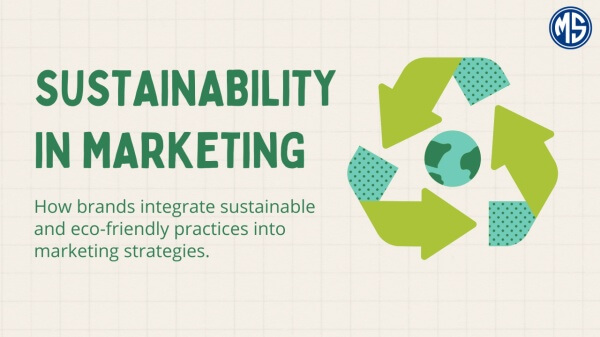
At HAVING, we help our partners develop and implement effective sustainability strategies. Here's our recommended approach:
Phase 1: Assessment and Goal Setting
Start by understanding your current environmental impact:
- Product Lifecycle Assessment: Evaluate environmental impact across the entire product lifecycle
- Material Analysis: Assess current materials for sustainability concerns
- Supply Chain Mapping: Identify key environmental hotspots in your supply chain
- Competitor Benchmarking: Understand what others in the market are doing
Set clear, measurable sustainability goals:
- Material Targets: e.g., "50% recycled content by 2024"
- Carbon Reduction: e.g., "30% reduction in carbon footprint by 2025"
- Waste Reduction: e.g., "Zero waste to landfill from production by 2023"
- Water Conservation: e.g., "40% reduction in water usage by 2024"
Phase 2: Implementation Strategy
Develop a phased implementation plan:
Material Substitution
- Start with Core Products: Begin with your bestsellers for maximum impact
- Hybrid Approach: Consider blends of sustainable and conventional materials as a transition
- Performance Testing: Ensure sustainable alternatives meet performance requirements
- Cost Analysis: Calculate ROI including potential price premium opportunities
Supply Chain Improvements
- Manufacturing Partner Selection: Choose partners with sustainability credentials
- Process Optimization: Identify water and energy reduction opportunities
- Transportation Efficiency: Optimize shipping methods and packaging
- Waste Reduction: Implement cutting efficiency and scrap recycling programs
Certification Strategy
- Identify Relevant Certifications: Select certifications that match your claims
- Develop Documentation Systems: Create processes to track and verify sustainability claims
- Third-Party Verification: Engage independent verification of sustainability claims
- Continuous Improvement: Plan for ongoing certification maintenance and expansion
Phase 3: Marketing and Communication
Develop authentic sustainability messaging:
- Be Specific: Use concrete facts rather than vague claims
- Be Transparent: Acknowledge areas still being improved
- Be Educational: Help consumers understand the impact of their choices
- Avoid Greenwashing: Don't overstate environmental benefits
Effective communication channels:
- Product Labeling: Clear sustainability information on tags and packaging
- Website Content: Dedicated sustainability section with detailed information
- Social Media: Regular updates on sustainability initiatives and progress
- Staff Training: Ensure team members can accurately explain sustainability features
ROI Calculation Framework
When evaluating sustainability investments, consider this framework:
| Investment Category | Typical Cost Increase | Potential Return | Payback Period |
|---|---|---|---|
| Recycled Materials | 10-15% | 15-25% price premium | Immediate to 6 months |
| Organic Materials | 20-30% | 20-30% price premium | Immediate to 6 months |
| Sustainable Packaging | 5-15% | 5-10% conversion improvement | 6-12 months |
| Sustainability Certification | $2,000-10,000 annually | 10-20% increased retailer placement | 6-18 months |
For guidance on developing your own sustainable activewear line, visit our detailed resource: Your Brand, Your Product: The Complete Guide to Private Label (OEM/ODM) Activewear & Yoga Wear Manufacturing.
Conclusion
The business case for sustainable activewear is compelling and multifaceted. Beyond meeting growing consumer demand for environmentally responsible products, sustainability initiatives deliver tangible business benefits through premium pricing opportunities, increased customer loyalty, enhanced brand value, and risk mitigation.
At HAVING, we're committed to supporting our partners in developing truly sustainable activewear that delivers both environmental and business benefits. By embracing sustainability as a core business strategy rather than a marketing afterthought, brands can position themselves for long-term success in this rapidly evolving market.
For a comprehensive overview of the entire activewear category, including market trends and business opportunities, visit our Ultimate B2B Guide to Sourcing & Selling Activewear & Yoga Wear.
Frequently Asked Questions (FAQ)
What's the most important sustainability feature for activewear consumers?
While preferences vary by segment, research shows that recycled content (particularly recycled polyester from plastic bottles) is the most universally valued sustainability feature, followed by reduced water usage and organic materials.
How much more are consumers willing to pay for sustainable activewear?
Market research indicates that 73% of consumers will pay at least 10% more for sustainable options, while 32% will pay premiums of 25% or higher for products with strong environmental credentials.
Which sustainability certifications are most valuable for activewear?
GRS (Global Recycled Standard) is most valuable for recycled content claims, GOTS (Global Organic Textile Standard) for organic materials, and bluesign® for overall environmentally responsible production. OEKO-TEX Standard 100 provides essential safety credibility.
How can small brands compete with large companies on sustainability?
Small brands can often implement sustainability initiatives more quickly and authentically than large corporations. Focus on transparent communication, specific environmental benefits, and creating genuine connections with sustainability-minded consumers.
Is it better to focus on sustainable materials or sustainable manufacturing?
Both are important, but sustainable materials typically have more immediate consumer visibility and marketing impact. However, a comprehensive approach addressing both materials and manufacturing processes creates the strongest sustainability positioning.
How do I avoid greenwashing accusations when marketing sustainable activewear?
Be specific about environmental claims, provide evidence and certifications to back them up, acknowledge areas still being improved, and focus on progress rather than perfection. Transparency about your sustainability journey builds credibility.
